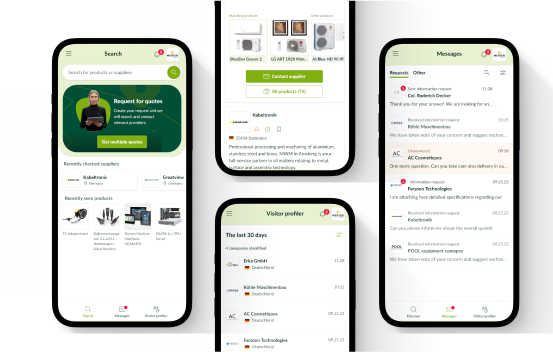Összes kategória
AddAdó- és szabályozástechnikaAkkumulátor- és akkutechnológiaAlapanyagok és kémiaAlkatrészekBauBeszerzés és leárazott készlet"Biztonsági és mentőtechnikaBiztonsági szolgáltatásokBőr, textil szálak, fonalak és anyagokBútorok és tárgyak berendezéseCső- és tömlőtechnikaCsomagolási szolgáltatásokCsomagolóanyagCsomagoló gépekDizájnElektromos szolgáltatásokElektrotechnikaÉlelmiszerÉlelmiszeripari technológiaEljárástechnikaEnergetikai technológiaÉpítkezési felszerelések és berendezésekÉpítőanyagok és építési felszerelésekÉpítőgépek és építőipari eszközökEsemény- és rendezvényszolgáltatásokFafajták és fatermékekFelületkezelésFelületkezelő gépekFém és fémtermékekFolyadékhajtástechnikaFordítási és lektori szolgáltatásokForgácsolás és alakításForrasztás-, hegesztés- és ragasztástechnikaFotó-, film- és hangszolgáltatásokGasztronómiaGasztronómiai és konyhai eszközökGasztronómiai felszerelésekGépalkatrészekGépek mezőgazdasági, erdészeti, halászati és kertészeti célokraGépészet, berendezés- és készülékgyártásGépjárműalkatrészek és gépkocsi kiegészítőkHajtástechnikaHardver az információs és kommunikációs technológiáhozHáztartási cikkekHideg-, klíma-, szellőztetés- és fűtéstechnikaHigiéniai és kozmetikai termékekHőkezelésHulladékkezelés és újrahasznosításIgény a textilgyártáshoz és a bőrfeldolgozáshozInformációs technológiai szolgáltatásokIngatlanügyintézésIpari szükségletekIrodaszerekJárművekJavítás, karbantartás és modernizálásJelöléstechnikaKábeltechnikaKépzés és továbbképzésKörnyezetvédelemKözlekedéstechnikaLaboratory equipment and supplies"Lézer technológiaLogisztika, szállítás és raktározásMarketing, reklám és értékesítésMenedzsment és adminisztrációMérés és ellenőrzéstechnikaMintaszolgáltatás, ellenőrzés és elemzésMontázsMűanyag és műanyagtermékekMultimédiaMunkavédelemNyomdagépek és papírgépekNyomtatás és papírÖntés, fröccsöntés és additív gyártásÖntő- és fröccsöntő gépekOptikaOrvostudomány és egészségügyPénzügyek és biztosításReklámhordozók és reklámtechnikaRobotics, process, and automation technologyRögzítéstechnika, csatlakozástechnika és kiegészítőkRuházat és kiegészítőkSportSzabadidő, Kultúra és IdegenforgalomSzállítástechnikaSzemélyzeti szolgáltatásokSzerszámgépek és -eszközökSzerszámok és gyártási szükségletekSzivattyútechnikaSzoftverSzolgáltatások mezőgazdaságból, erdészetből, halászatból, kertészeti ágazatbólSzükséglet mezőgazdaság, erdészet, halászat, kertészeti számáraSzűrő- és szittechnikaTanácsadásTárolóedények, logisztikai és raktár felszerelésekTermékek a mezőgazdaságból, erdőgazdálkodásból, halászatból, kertészetbőlTervezés, kivitelezés és fejlesztésTextilgépekTextilgyártásTextiltermékekTisztításTisztító és ápolószerekTisztítóeszközökTisztító eszközök és -gépekTömítéstechnikaÜveg- és kerámiatermékekVezérműszakiVilágításVízvezeték-szerelés







